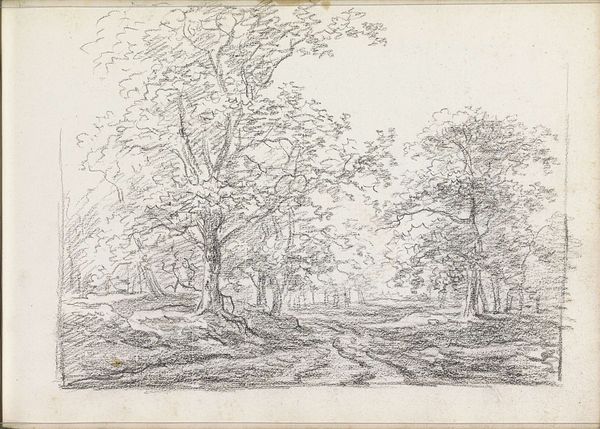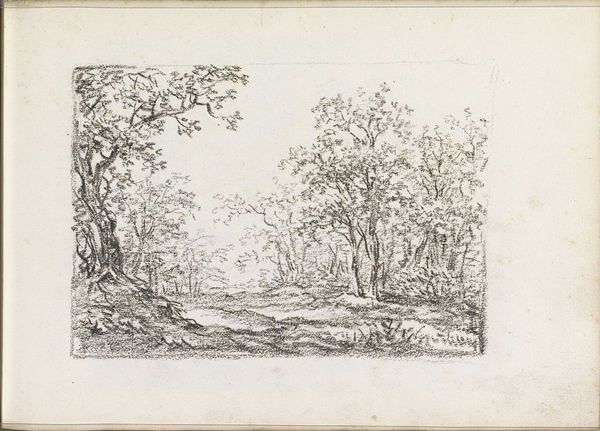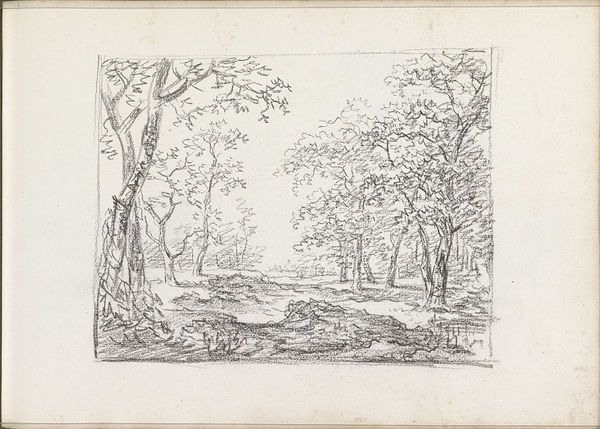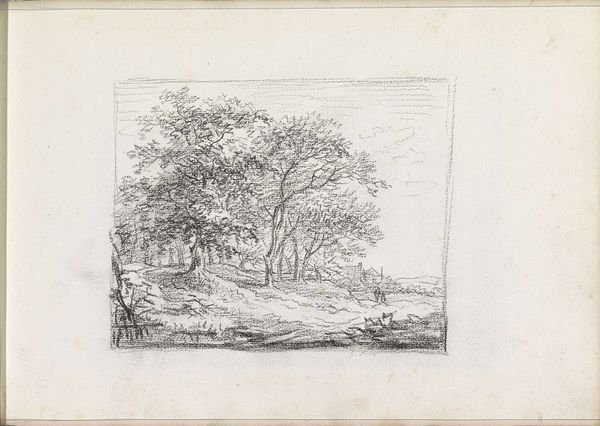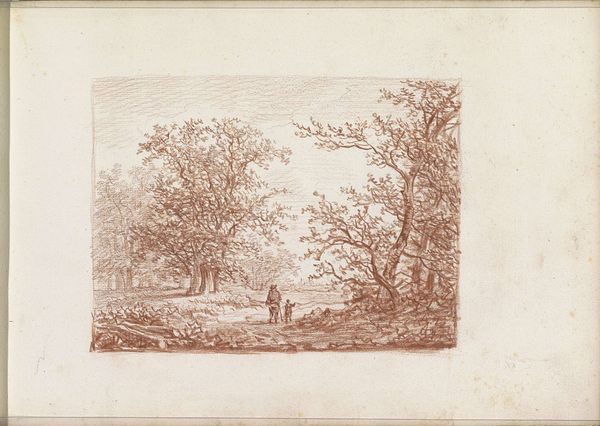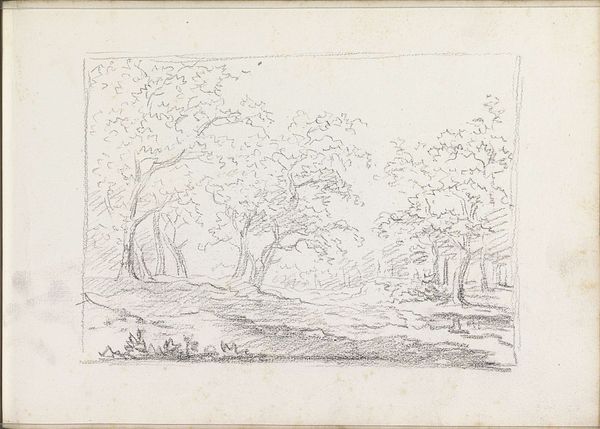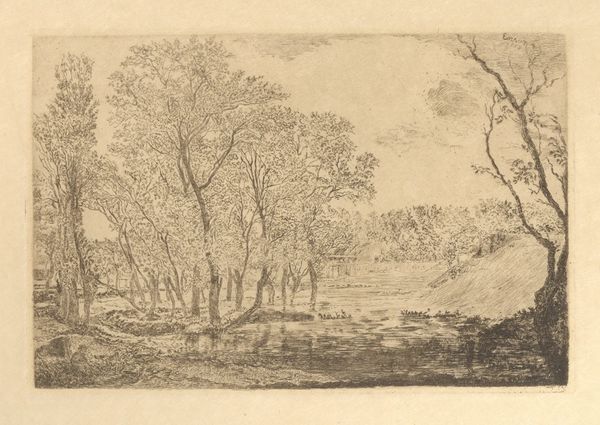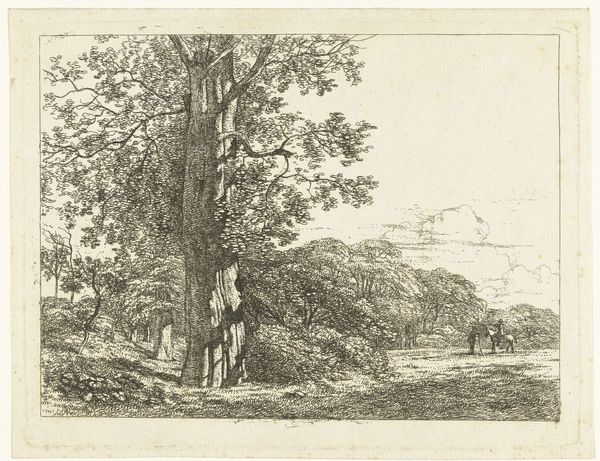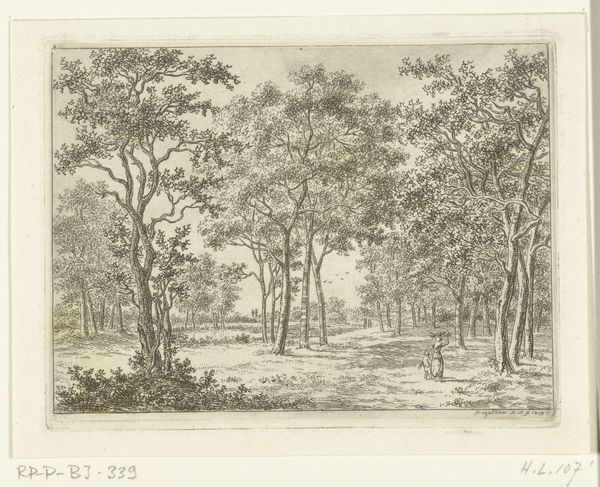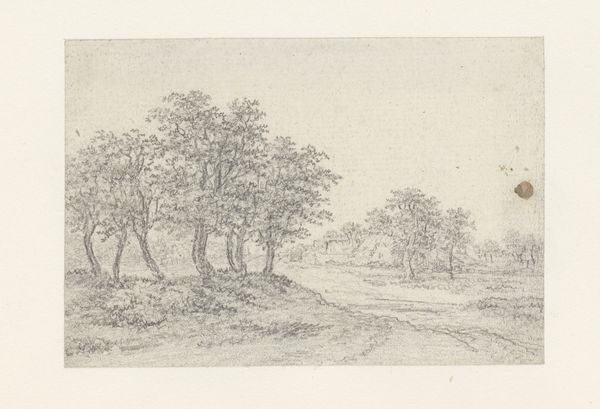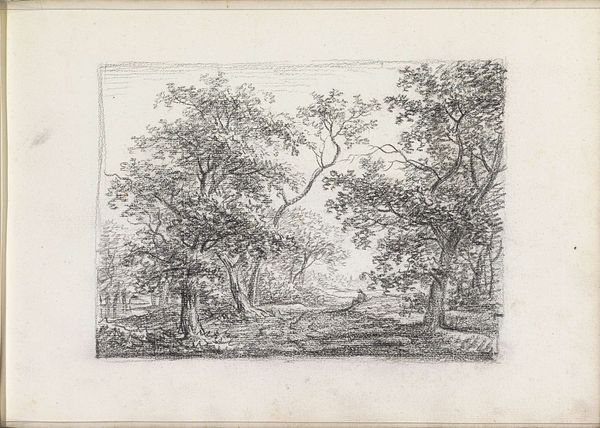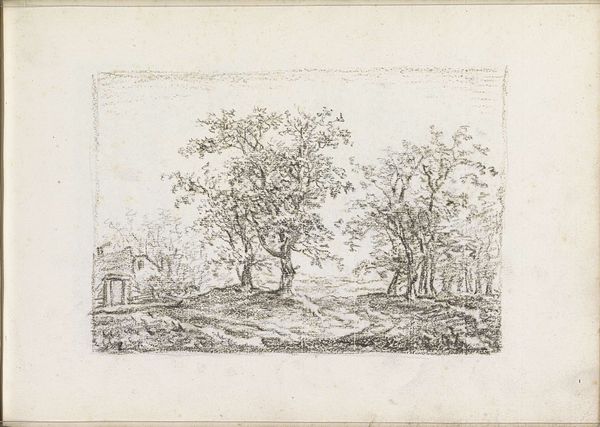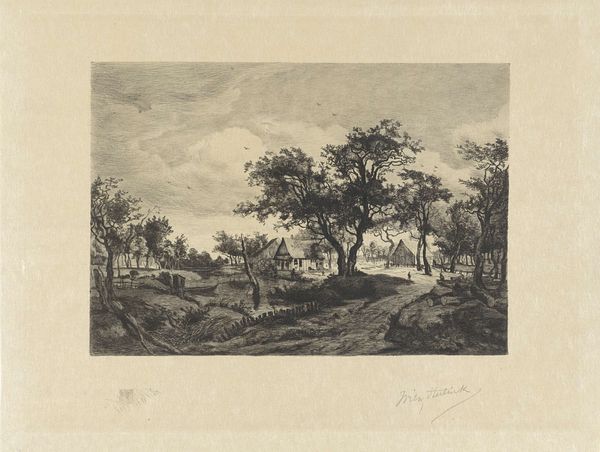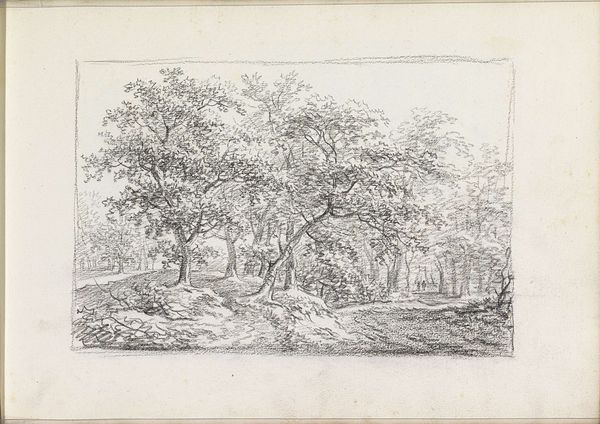
drawing, pencil
#
drawing
#
pencil sketch
#
landscape
#
romanticism
#
pencil
#
realism
Copyright: Rijks Museum: Open Domain
Curator: This pencil drawing is titled "Open plek in een landschap met bomen," or "Open Space in a Landscape with Trees," created around 1811 by Andreas Schelfhout. It's part of the Rijksmuseum collection. Editor: My immediate impression is of tranquility, almost to the point of being somber. The pencil work creates this hazy, soft atmosphere that feels almost dreamlike. Curator: Schelfhout, as a landscape artist of the early 19th century, occupies a crucial position. We see in his work the influence of the Romantic movement. Nature here becomes not just a backdrop, but a reflection of internal human emotions. Editor: Absolutely. And I think we also see a kind of... absence. The "open space" feels charged with potential, or perhaps a memory. Is it intentionally unpopulated, leaving room for the viewer to project themselves? It brings questions to my mind concerning human presence within the wider environmental context. Curator: That’s a valuable perspective. We know that artists of this era often aimed to create idealized visions of the world, even if they were rooted in observed reality. It speaks to the power dynamics inherent to representation, what are these places made of, what specific narratives are given emphasis over others? Editor: The light also seems carefully considered. It is focused in that "open space," almost as if the trees create a stage or theater that then highlights those small figures far off in the background. How would contemporary ecocriticism approach such renderings, I wonder? Curator: Indeed, it encourages us to look closely at the choices Schelfhout made. Was it consciously crafted with a view toward the social perception of landscapes and to position humans and our impact, or lack thereof? It shows the subtle messaging embedded in visual media from this period and how relevant they continue to be when tackling the narratives of gender, politics, and identity. Editor: Exactly. Thanks for pointing out those nuances. The socio-historical context definitely provides added insight. Curator: And it invites one to question, to contemplate... How the legacy of our depictions might guide how we interpret them even now. Editor: That perspective makes a stroll through this landscape all the more meaningful, really.
Comments
No comments
Be the first to comment and join the conversation on the ultimate creative platform.
